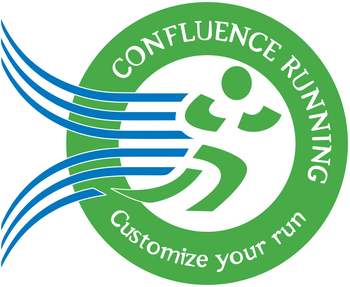From Transaction to Transformation: Elevating the Running Retail Experience at Confluence Running
Enhancing Customer Experience Through Interactive Engagement and Informed Retail Practices
During the recent training session at Confluence Running, staff members gathered to review insights and strategies inspired by their experience at The Running Event (TRE). The meeting underscored a collective commitment to elevating the customer experience. Team members from multiple store locations discussed practical ways to increase customer engagement, empower shoppers with knowledge, and personalize the retail environment. Here are the key themes and takeaways:
Ideas to Engage Customers with Interactive In-Store Experiences
- Hands-on “Touch-and-Try” Stations: Place a demo set of Shokz headphones at seating areas so customers can experience products they wouldn’t normally seek out. Provide pull-tab cards or simple mechanical elements on displays that reveal brand history, eco-friendly practices, or local running trail tips when lifted.
- Personal and Local Memorabilia: Incorporate local high school team singlets, race photos, and a store timeline displayed in creative, moveable formats. For example, visitors could flip through a series of photos or open a hidden panel to reveal interesting backstories, transforming downtime in the store into an opportunity for discovery and conversation.
Deeper Details:
During the training session, staff emphasized the importance of turning a traditional shopping trip into an engaging journey. Instead of having customers passively wait for their shoes, giving them something interactive to do—like testing the sound quality of Shokz headphones—can surprise and delight. Inspired by presentations at The Running Event, the team envisioned small “Easter egg”-style elements: a pull-tab might show how many plastic bottles were recycled to make a shirt, or a flip-card might highlight the history of a local marathon.
This approach doesn’t require high-tech installations; even simple, tangible touchpoints add richness. Community photos and memorabilia reinforce a sense of local pride, helping customers feel connected to the store’s roots. This personal touch can be especially impactful during peak times, making their wait more meaningful and enjoyable.
Providing Information to Educate Customers for Better Service
- Running Guides at the Fitting Station: Offer trifolds and brochures that outline race preparation checklists—such as gear essentials, hydration needs, chafing prevention tools, and insoles—so customers can learn while waiting.
- Segmented Resources for Varied Goals: Create different guides for different experience levels—a “Couch to 5K” outline for beginners, or a “Common Running Ailments” card for those dealing with injuries—allowing customers to feel informed and empowered without staff having to deliver lengthy explanations all at once.
Deeper Details:
Staff recognized that customers often have concerns or questions they may not know how to articulate. By placing informational pamphlets near fitting benches, customers receive immediate value, learning about the importance of proper socks or why a certain bra design might improve their running experience. These tools spark curiosity and questions, leading to a more productive conversation when the staff returns with potential footwear options. Such guides cater to both novices and experienced runners, ensuring everyone leaves feeling more knowledgeable and confident about their choices.
Having Conversations About What Else We Might Be Missing
- Rephrasing the Closing Question: Instead of “Anything else I can help you with?” ask, “Is there anything I missed?” to prompt customers to review their entire experience and consider additional needs.
Deeper Details:
The subtle linguistic shift in the closing interaction encourages customers to think holistically. Perhaps they initially came for shoes but now recall needing reflective gear for evening runs or insoles for work shoes. This rephrasing converts a routine checkout into an open-ended conversation, inviting customers to explore aspects they hadn’t yet considered. Early trials of this approach have already led to more meaningful exchanges, ensuring customers feel thoroughly cared for and not rushed.
Introducing “Wild Card” Products to Inspire Discovery
- Unanticipated Suggestions: Present customers with an unexpected item, such as a performance base layer or specialty sports bra with hidden pockets, after fitting them for shoes.
- Highlight Unique Selling Points: Emphasize brand stories, like eco-friendly jacket fillings or women-owned apparel lines, to pique interest and differentiate the store’s selection.
Deeper Details:
This concept, highlighted at TRE, encourages staff to broaden customers’ horizons. Even if a shopper comes in solely for footwear, they might be intrigued by a demonstration of how a particular pair of sunglasses can block glare on snowy trails or how a certain nutrition product can help them recover after long runs. While they may not buy these items immediately, planting the seed creates a memorable experience that can pay off in future visits. Explaining brand values—like sustainable materials or inclusive design—further enhances the store’s reputation as both trendsetter and trusted advisor.
Personalizing Merchandising with Employee Picks, Local Imagery, and Brand Stories
- Employee Endorsements: Add “employee pick” tags with short notes on why staff members love certain products.
- Local Pride & Brand Narratives: Hang updated local race photos, signed team jerseys, or small story cards that explain a product’s origin and craftsmanship.
- Make the Store a Community Gallery: Display rotating images of local races and events. Include a brief backstory or a fun fact next to each piece, reinforcing the store’s role as a community gathering spot.
Deeper Details:
Personality and authenticity set small retailers apart from big-box stores. By featuring employee favorites and sharing their reasons—perhaps a staff member’s beloved hydration vest or go-to winter running tights—customers see the store as a place run by real, passionate runners. Showcasing local high school uniforms or historical race moments fosters a sense of belonging. Brand story cards can highlight a company’s sustainable manufacturing process or a special edition product inspired by the Olympics. These visual cues encourage conversation and trust, ultimately making the store feel like a welcoming community hub rather than a transactional space.
In Summary:
Merging these approaches—interactive elements, educational resources, reflective questioning, wild card introductions, and personal/community stories—creates a holistic experience that resonates with customers. By implementing suggestions gathered from The Running Event and the collective creativity of Confluence Running’s team, the store aims to become more than just a place to buy running shoes. Instead, it will serve as an engaging, informed, and personal environment that inspires customers to return, explore, learn, and grow as runners and community members.
Tags
Running retail experience, Interactive shopping, Customer engagement strategies, Running store community, Local running culture, Brand storytelling in retail, Personalized product recommendations, In-store merchandising ideas, Running gear education, Sustainable running products, Women-owned athletic brands, Marathon training resources, Retail innovation trends, Athlete empowerment, Community-driven retail, Customer service excellence, The Running Event insights, Retail transformation, Personalized shopping journey, Enhancing retail atmosphere


